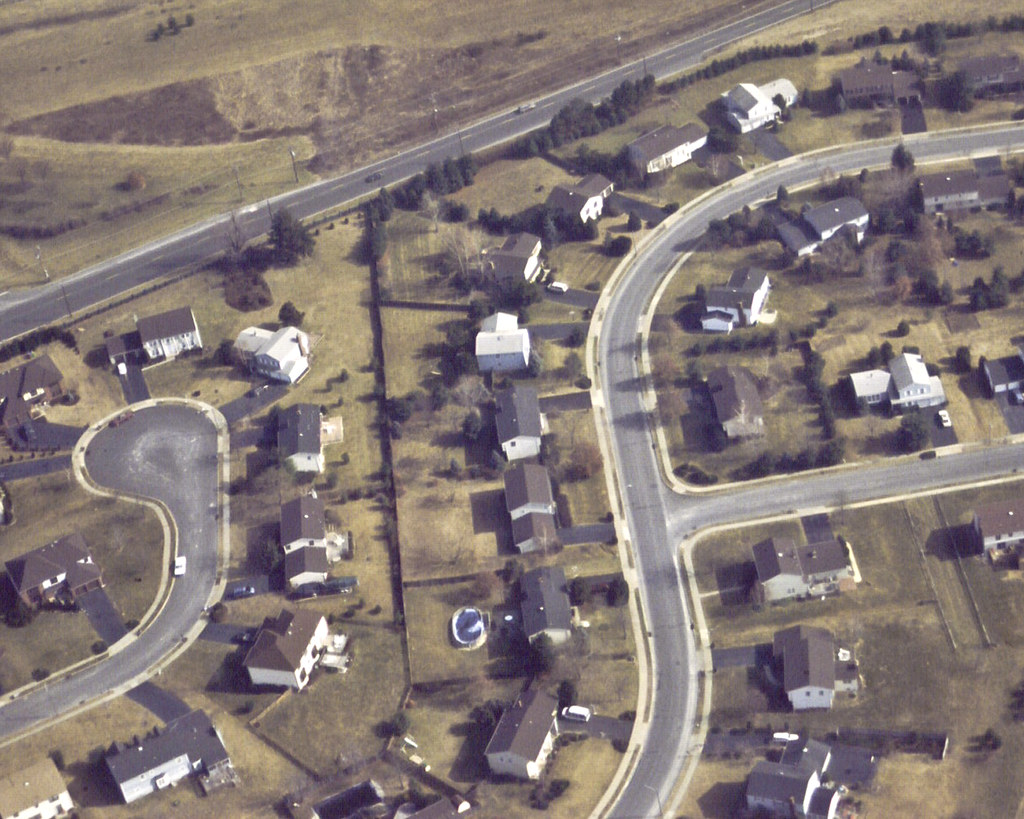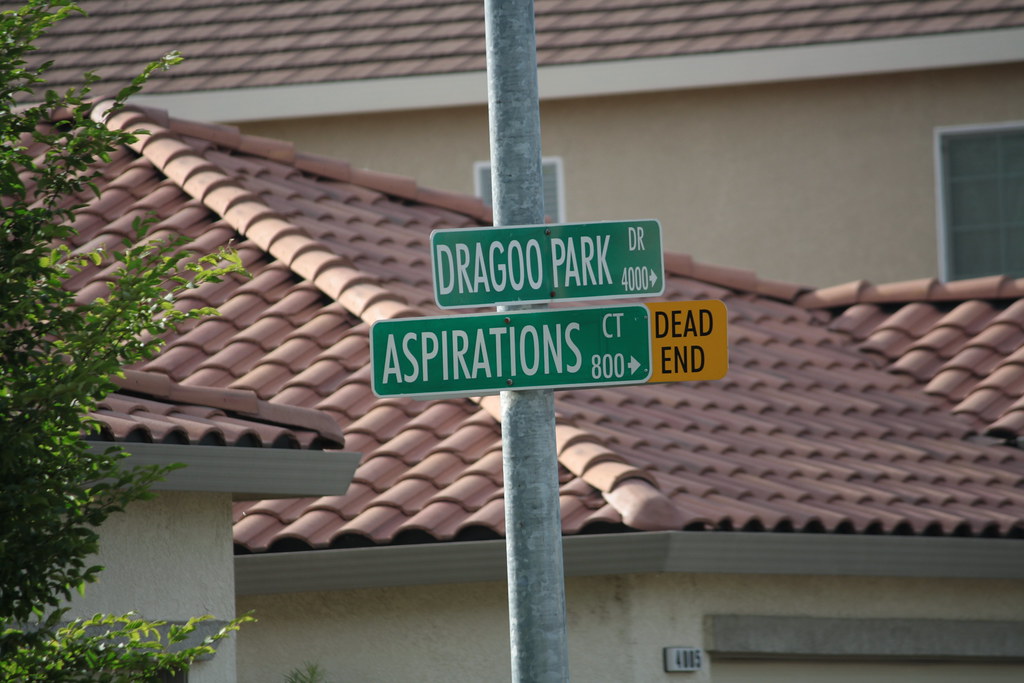What does someone call a short street with only a single outlet to a larger street? I wondered because I found different terms that varied geographically. There seemed to be a cultural dimension to it as well. Certain suffixes seemed to be more prevalent in the United Kingdom and others in the United States, with Canada displaying elements of both. I’ve fixated on such suffixes before, notably in What the Drung and What the Stravenue. This time I focused on the humble cul-de-sac.
Cul-de-sac

Cul-de-sacs don’t get much respect in recent years. They became a favored symbol of unbridled construction and suburban sprawl. All those dead end streets allowed developers to stuff more homes onto lots at the expense of traffic efficiency. I couldn’t do anything about that — some things were way beyond the abilities of Twelve Mile Circle — although I could examine some etymology. From the Online Etymology Dictionary:
“1738, as an anatomical term, from French cul-de-sac, literally ‘bottom of a sack,’ from Latin culus ‘bottom, backside, fundament.’ …Application to streets and alleys is from 1800.”
I guess it made sense. The cluster of homes at the end of a road resembled the bottom of a sack. Cars going into the sac could only exit the same way. No other choices existed. Actually I didn’t intend to beat up on the Cul-de-sac (or any generic dead-end street) as a design element. The point today was to examine the designation of such roads, specifically the suffixes appended to them.
Close
I got started on this unfortunate idea when I examined the Isle of Dogs in the recent Random Islands article. I noticed a street with an odd suffix; Wheat Sheaf Close. Nearby I soon spotted Inglewood Close, Severnake Close and Epping Close. Was this a common thing, I wondered? Were little dead-end streets in the United Kingdom sometimes referred to as Closes? It seemed to be the case as I checked various random corners of the British Isles. Twelve Mile Circle’s loyal UK readers should be able to confirm its usage and frequency if that’s the case.
They existed in Canada too. Canada Post included Close as an acceptable suffix. However it did not offer an abbreviation for it. The UK specified “Cl.” In London’s Isle of Dogs someone could write a letter to Wheat Sheaf Cl and that would be acceptable. Head to Medicine Hat, Alberta, on the other hand, and the address should include the entire word, as in Smith Close SE. New Zealand also used the abbreviated form in its address system although I couldn’t find any real-world examples. I couldn’t find any information about Australia, though. Any Closes in Australia, dear readers? Conversely, the United States Postal Service didn’t even include Close among its recognized suffixes.
Nonetheless the suffix made perfect sense. The roads indeed closed at one end.
Cove
The US Postal Service did include something more unusual however, the suffix Cove. It referred to the same thing, a short road with a dead-end or a cul-de-sac. I suspected the usage must have been sporadic, geographically confined, or both. I’d never personally seen a street with a Cove suffix. Even so, the USPS reserved the abbreviation “CV”, so it obviously existed with at least some level of frequency.
Wikipedia referenced the suffix and singled-out Memphis, Tennessee. Naturally I needed to find a Cove in Memphis. I plugged common street names into a map randomly until Ash Creek Cove appeared, as did several others nearby. I didn’t know why Wikipedia singled-out Memphis though. Other coves appeared in Arkansas, Mississippi and Arizona before I got tired of looking for more.
I wish this suffix got greater use. I liked the image it evoked.

A cul-de-sac resembled a perfectly formed cove, like Lulworth Cove (map) along the coast of Dorset, England. A cove offered refuge and safety, a nice analogy for a quiet suburban home away from traffic.
Court

I was most familiar with the use of Court as a suffix. I wondered if that sounded weird in other places, like Close and Cove sounded to me. Actually Court seemed so normal to me that I never even considered other possibilities until I stumbled upon Close.
That, of course, made me wonder why someone chose Court as a suffix for a street with a cul-de-sac or a dead end. The etymology supported it, though. It derived from Old French via Latin, for an “enclosed yard.” Over time it came to be applied to various enclosures, e.g., royalty (king’s court), government entities (court of law), or sports (tennis, basketball, etc.). A street closed at one end, using the same logic, could also be a Court.
I enjoyed the photo I found to represent the concept. Aspirations Court featured a Dead End marker — where aspirations went to die, perhaps? What were the sign makers in Modesto, California (map) thinking?

Leave a Reply